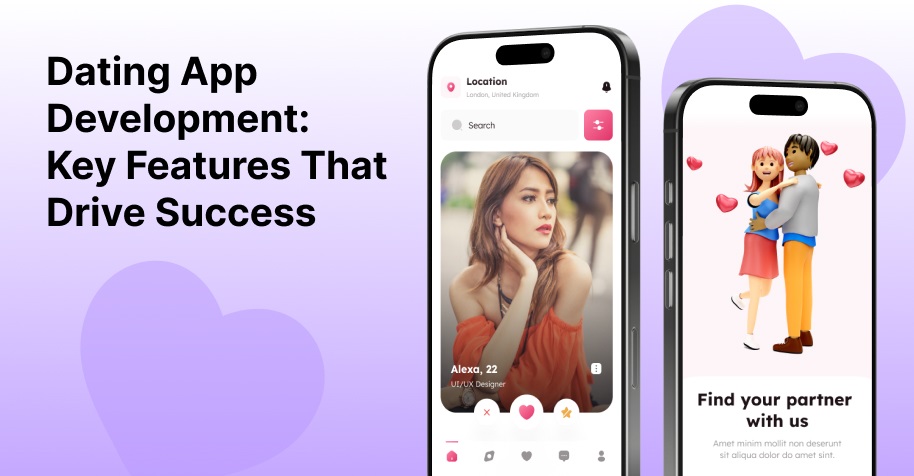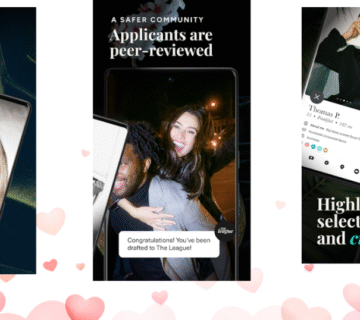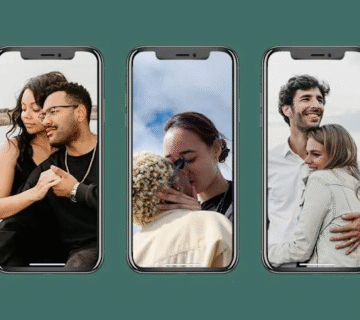The domain of online dating has witnessed remarkable transformation in the past decade, and with the dawn of 2025, it is poised for even more exciting developments. From the early swipe-based approaches to today’s AI-driven personalized experiences, dating apps have fundamentally changed how people meet, interact, and build relationships Dating App Development in 2025.
For businesses and developers aiming to build successful Dating App Development in 2025, understanding the intricate blend of technology, UX, business strategies, and marketing is essential. This comprehensive guide offers a stepwise approach to dating app development, highlighting current market trends, must-have features, technological choices, monetization strategies, and the significance of optimizing your business visibility on platforms like Google My Business.
Why Build a Dating App in 2025?
The global online dating market is booming — with projections indicating revenues exceeding $7.5 billion in 2025. Millennials and Gen Z dominate contributor demographics, seeking apps that are secure, engaging, and highly personalized.
Societal acceptance of online dating has normalized its usage, making digital platforms a primary source to find long-term relationships, friendships, or casual interactions. This shift creates unparalleled opportunities for innovative dating applications.
Step 1: Market Research & Niche Selection
Before diving into development, thorough comparative market research is crucial. Examine:
-
Popular apps such as Tinder, Bumble, and niche players like Hinge.
-
User demographics, preferences, pain points, and feedback.
-
Emerging niches: faith-based, LGBTQ+, seniors, specific cultural groups.
Understanding your target audience and potential niches allows a laser-focused product with clear value propositions.
Step 2: Essential Features for Modern Dating Apps
Your app must include core functionalities to attract and retain users:
-
Easy Registration & Profile Creation: Integrate social logins (Google, Facebook, AppleID) for frictionless onboarding.
-
AI-Powered Matchmaking: Use machine learning to analyze compatibility beyond superficial metrics.
-
Communication Channels: Include chat, voice, video calls, and multimedia sharing.
-
Location-Based Searching: Geolocation with adjustable privacy controls.
-
Enhanced Safety Features: Verification workflows, AI-driven content moderation, reporting/blocking system.
-
Push Notifications: Personalized but non-intrusive.
-
Gamification and Community Features: Quizzes, achievements, discussion boards to engage users.
Step 3: Choose the Right Technology Stack
-
Frontend Development: Flutter or React Native (efficient cross-platform applications), Swift (iOS), Kotlin (Android).
-
Backend Development: Node.js, Python Django, Ruby on Rails.
-
Database Management: MongoDB, PostgreSQL for flexible schema and reliability.
-
Cloud Services: Amazon Web Services, Google Cloud Platform, Microsoft Azure.
-
Real-Time Communication: Twilio, Agora SDK for video & messaging services.
-
AI Frameworks: TensorFlow, Watson for matchmaking and content safety.
Step 4: UX/UI Design Best Practices
-
Design a simplistic, clean interface ensuring intuitive navigation and quick interactions.
-
Prioritize inclusivity: provide support for multiple languages, accessibility options for visually or motor-impaired users.
-
Develop responsive designs adaptable across smart devices and web browsers.
Steps 5: Build & Test Your MVP (Minimum Viable Product)
-
Create an MVP featuring core functionalities to validate market fit early.
-
Conduct rigorous testing including usability, security audits, and device compatibility evaluation.
-
Implement beta testing with real users to refine features, gather feedback, and fix bugs.
Step’s 6: Monetization Strategies
-
Freemium Model: Offer essential services for free, monetizing premium features such as unlimited messaging or profile boosts.
-
In-App Purchases: Virtual gifts, super likes or visibility enhancements.
-
Advertiser Partnerships: Curated, unobtrusive advertisements tailored to user interests.
-
Subscription Plans: Tiered premium subscriptions for access to exclusive functionalities.
Steps 7: Launch & Marketing with Business Listing Optimization
A powerful marketing tactic is optimizing your dating app listing on Google My Business (GMB). This boosts discoverability via Google Search and Maps, increases user trust through genuine reviews, and allows direct engagement with your audience.
Optimize your GMB listing by:
-
Completing all fields accurately: business name, contact info, website links.
-
Adding captivating photos and videos showcasing features.
-
Posting regular updates about app enhancements and offers.
-
Encouraging satisfied users to leave reviews and responding promptly.
Claim and optimize your profile at Google My Business.
Step 8: Use AI Tools to Improve User Engagement and Moderation
AI contributes substantially by:
-
Enhancing personalized matchmaking algorithms.
-
Automating abuse detection and content moderation.
-
Providing AI-based chatbots for user guidance and support.
-
Analyzing user engagement data to optimize features and notifications.
When implemented tactfully, AI enriches the dating experience without replacing the human touch.
Step 9: Continuous Improvement and Expansion
Constantly monitor analytics to understand user behavior and feedback. Regularly update and enhance your app with:
-
New communication features (e.g., voice notes, video filters).
-
Improved AI algorithms based on new data.
-
Enhanced security protocols per emerging threats.
-
Growth into new markets or demographic segments.
Read More: How to Develop a Successful Dating App in 2025: Complete Guide
Conclusion
The Dating App Development in 2025 offers tremendous opportunities for innovative, user-centric, and secure platforms. Success depends on blending cutting-edge technologies, personalized experiences, trust-building features, and smart business listing optimization.








[…] these trends is essential for entrepreneurs, developers, and marketers aiming to build or promote successful dating apps in the coming years. This article explores the top 10 dating app market trends transforming the […]